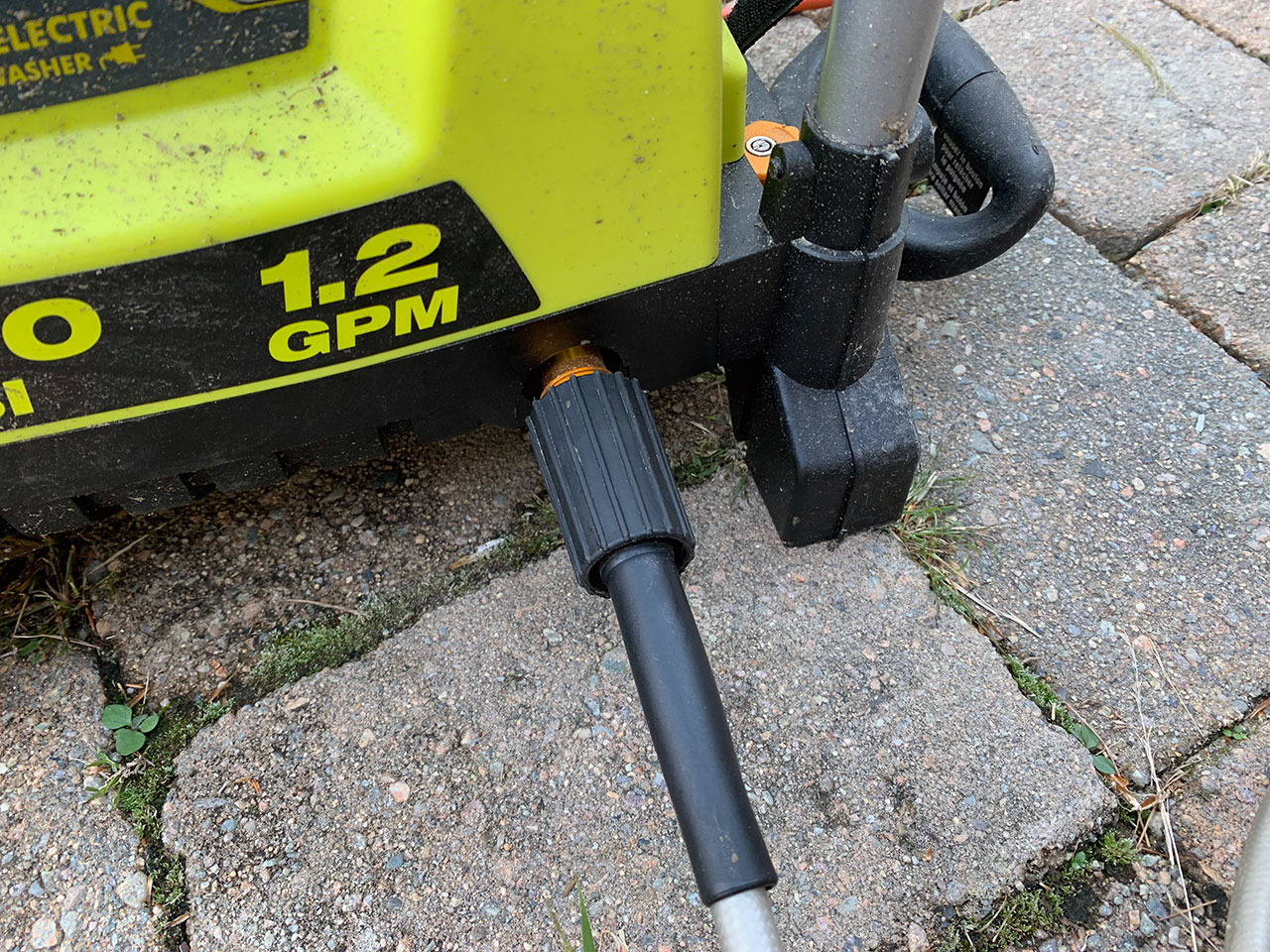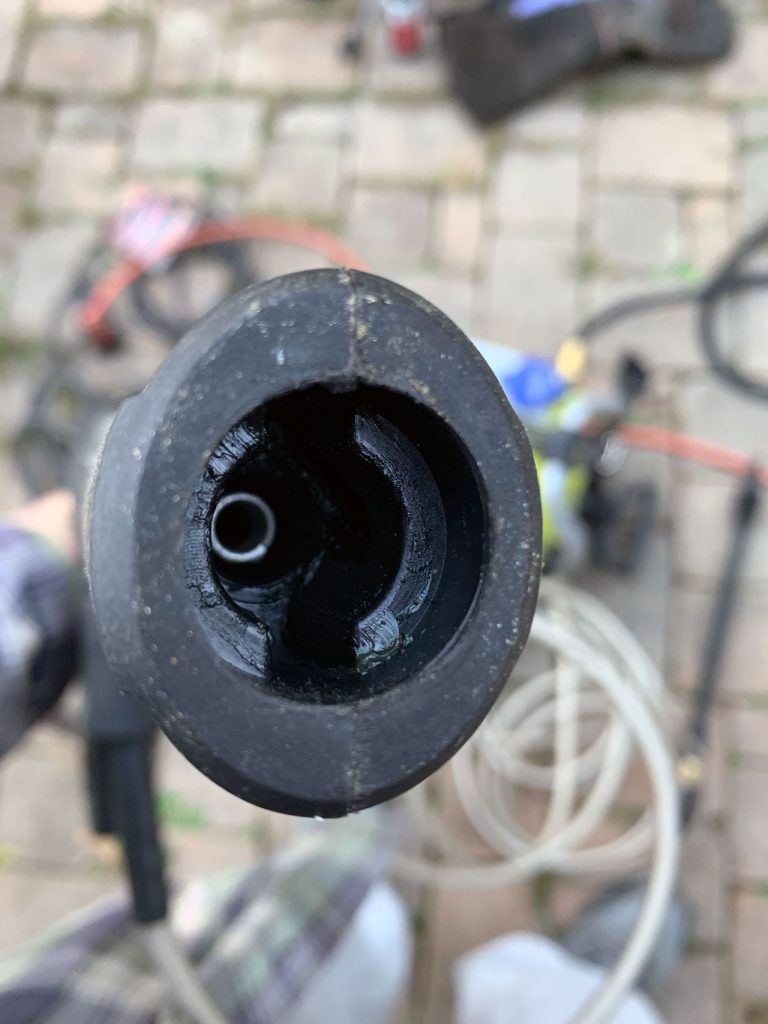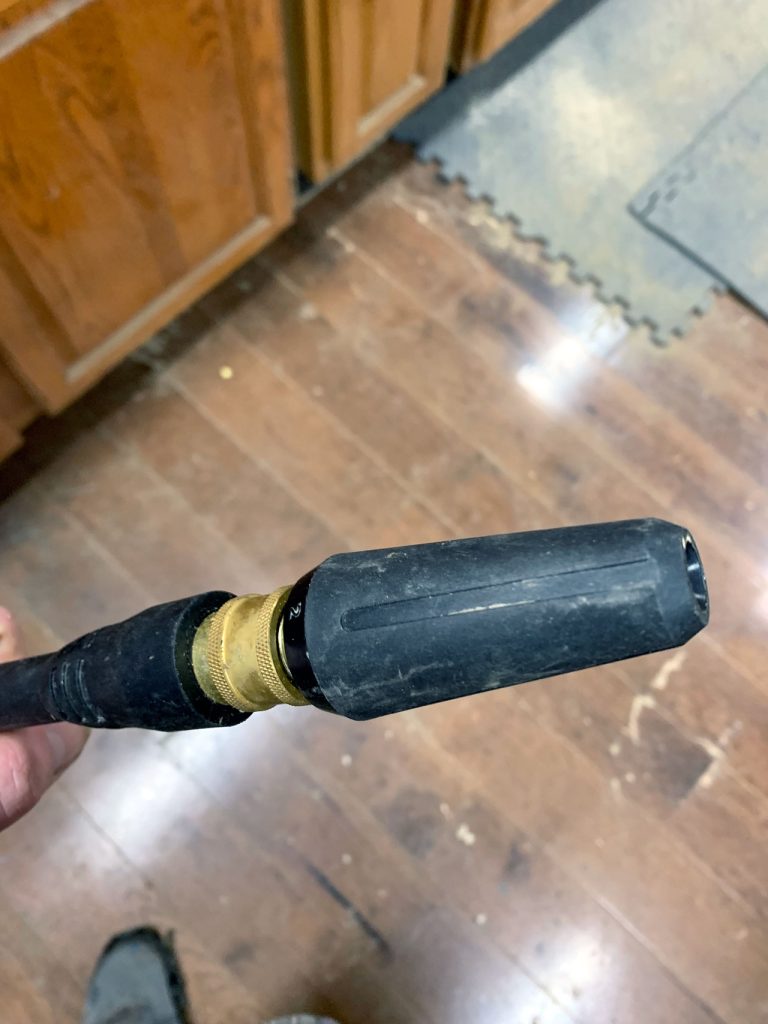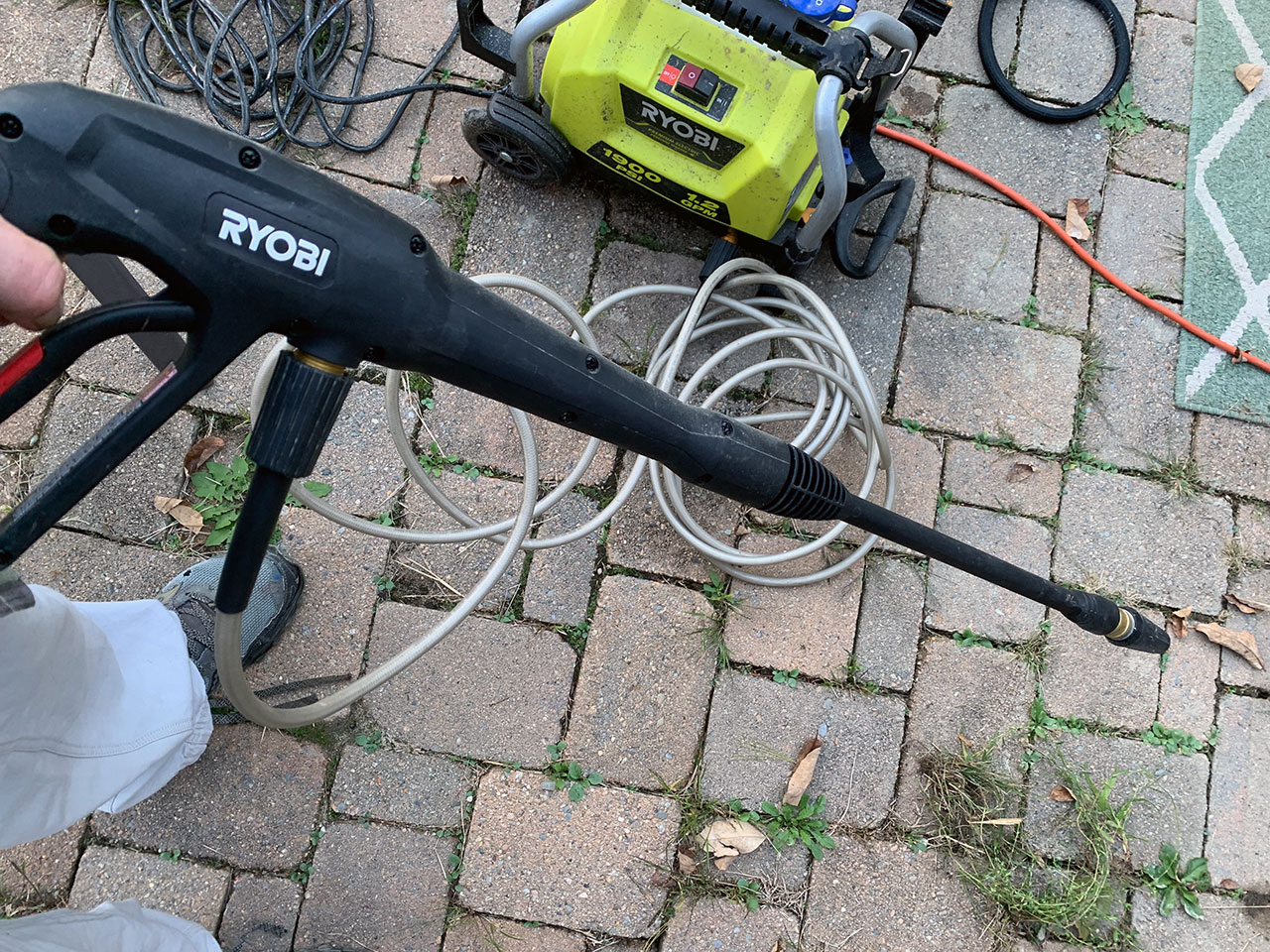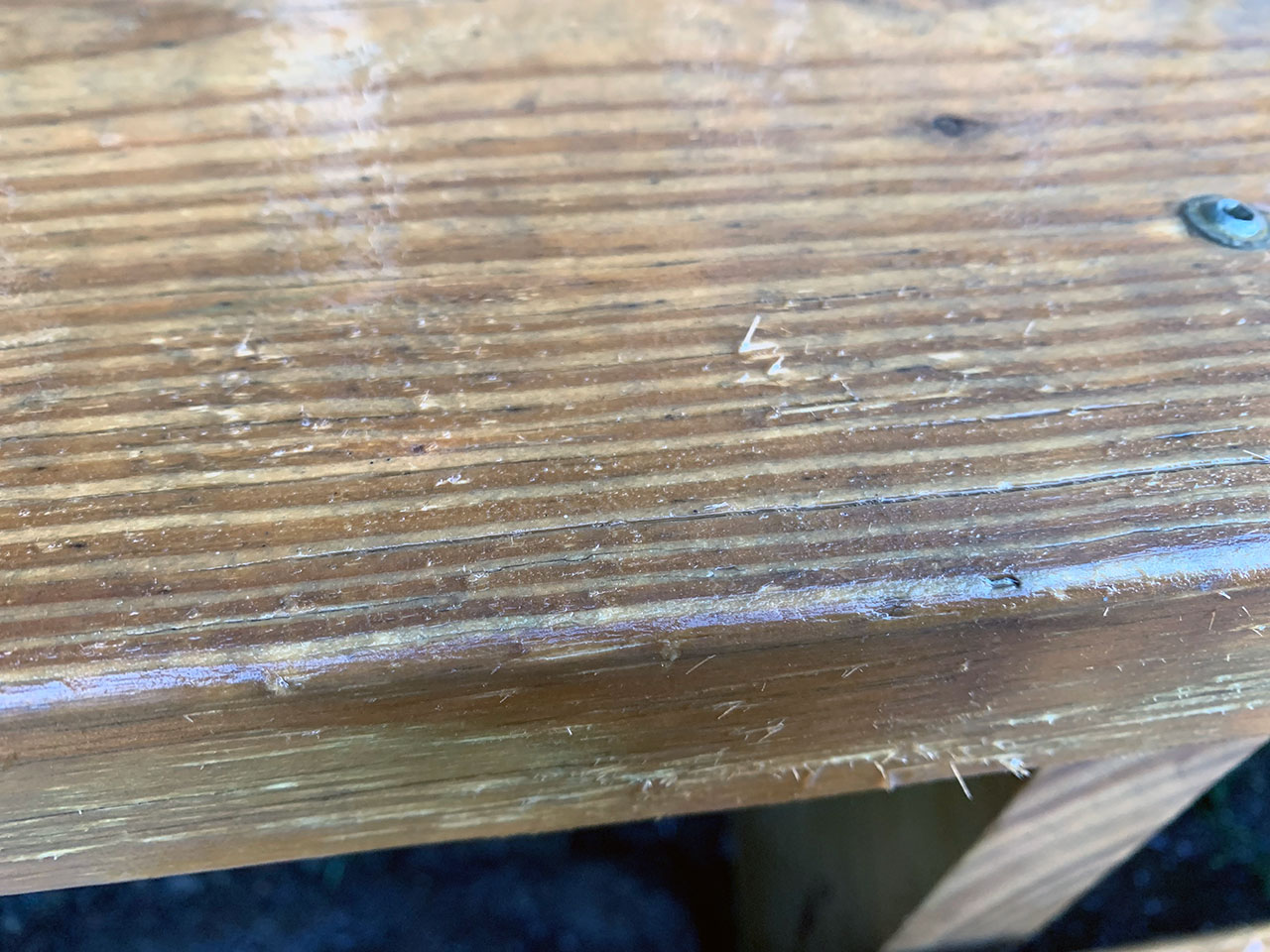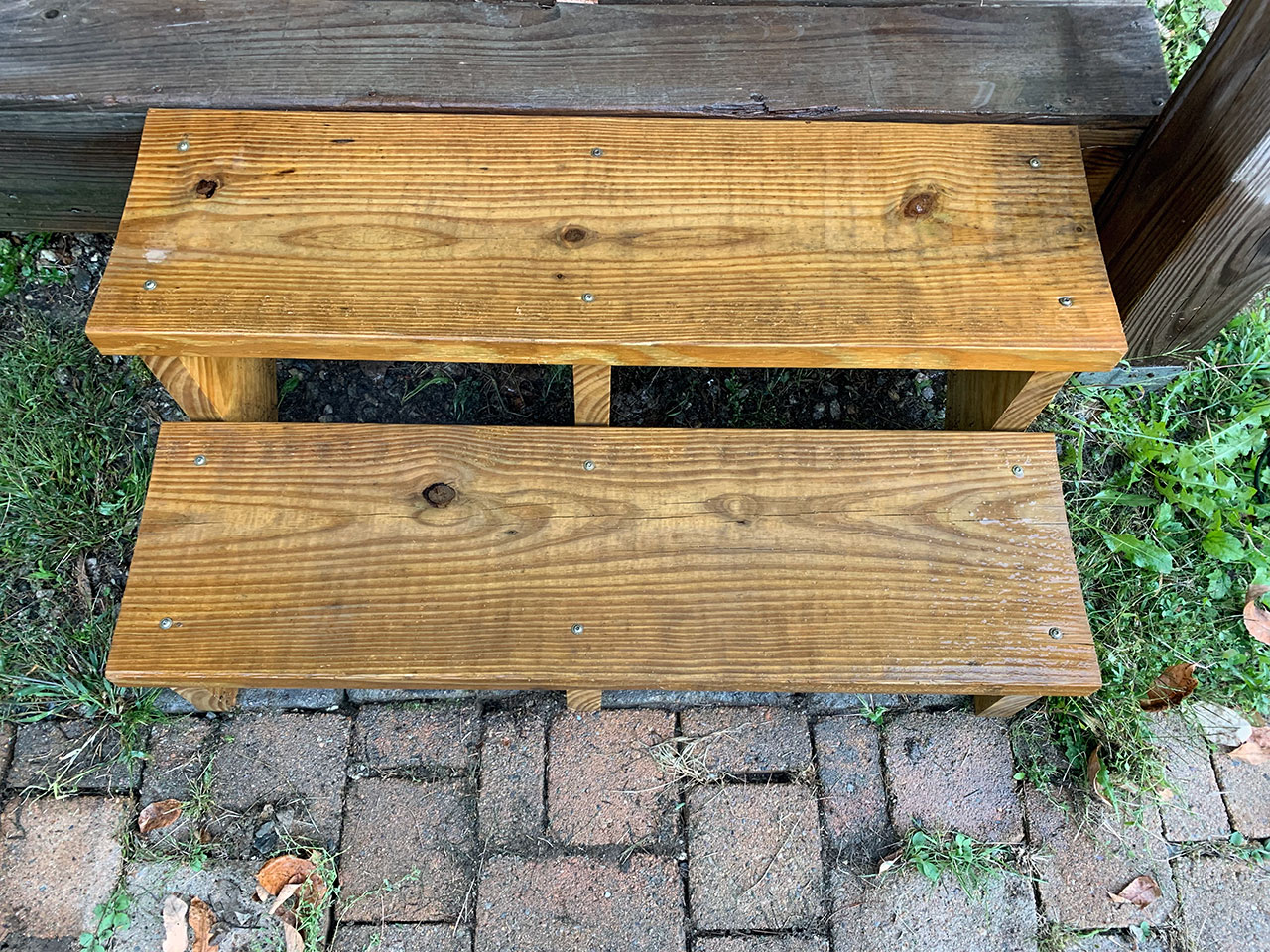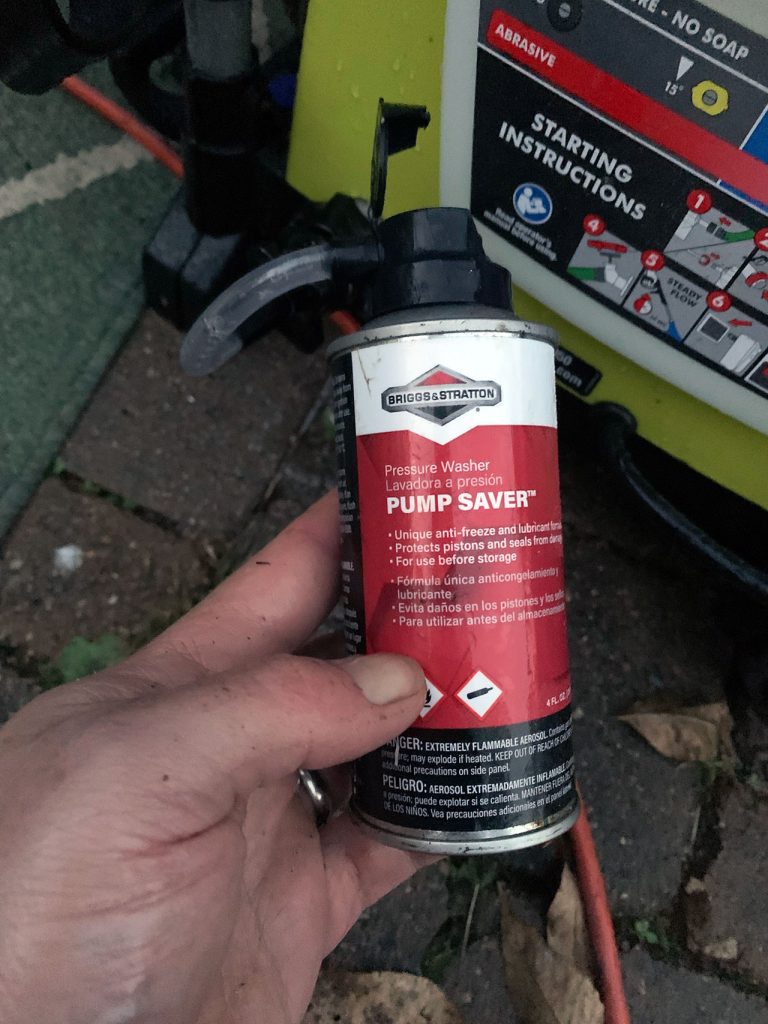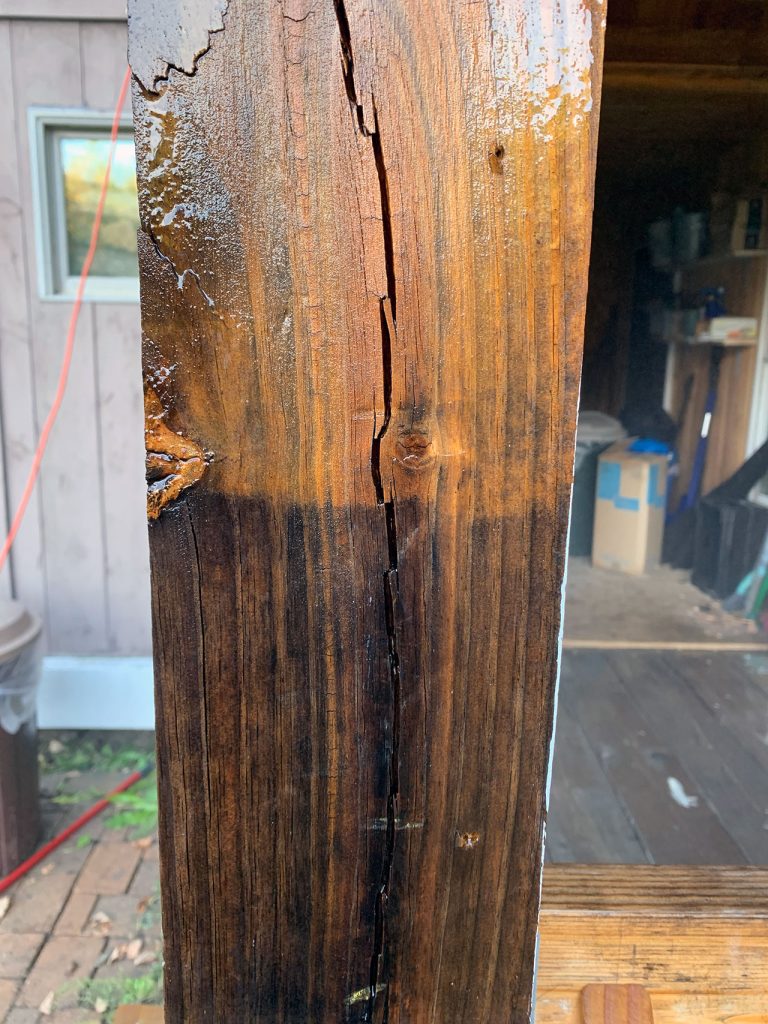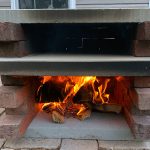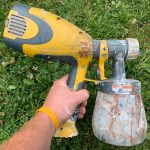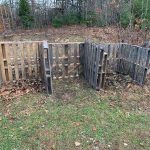Using a pressure washer on your deck is an essential step if you’re planning on staining it. It cleans the wood removing the layer of dirt and grime that slowly accumulates on it. Even if you don’t plan on staining it, pressure washing is a great way to get all the dirt and grime off there and have your wood looking new again.
This guide is aimed at complete beginners who may have never touched a pressure washer before.
Setting up the Pressure Washer
Every pressure washer is a bit different but there’s some things that are always the same. I use a Ryobi 1900 PSI electric pressure washer that I bought at Home Depot, though you can find it on Amazon as well.
I got this pressure washer over a year ago. It’s seen a lot of use and has held up very well. I highly recommend it.
Regardless of your pressure washer you’re going to have an inlet where the water goes. On mine it’s here.
All you have to do is attach your hose to there.
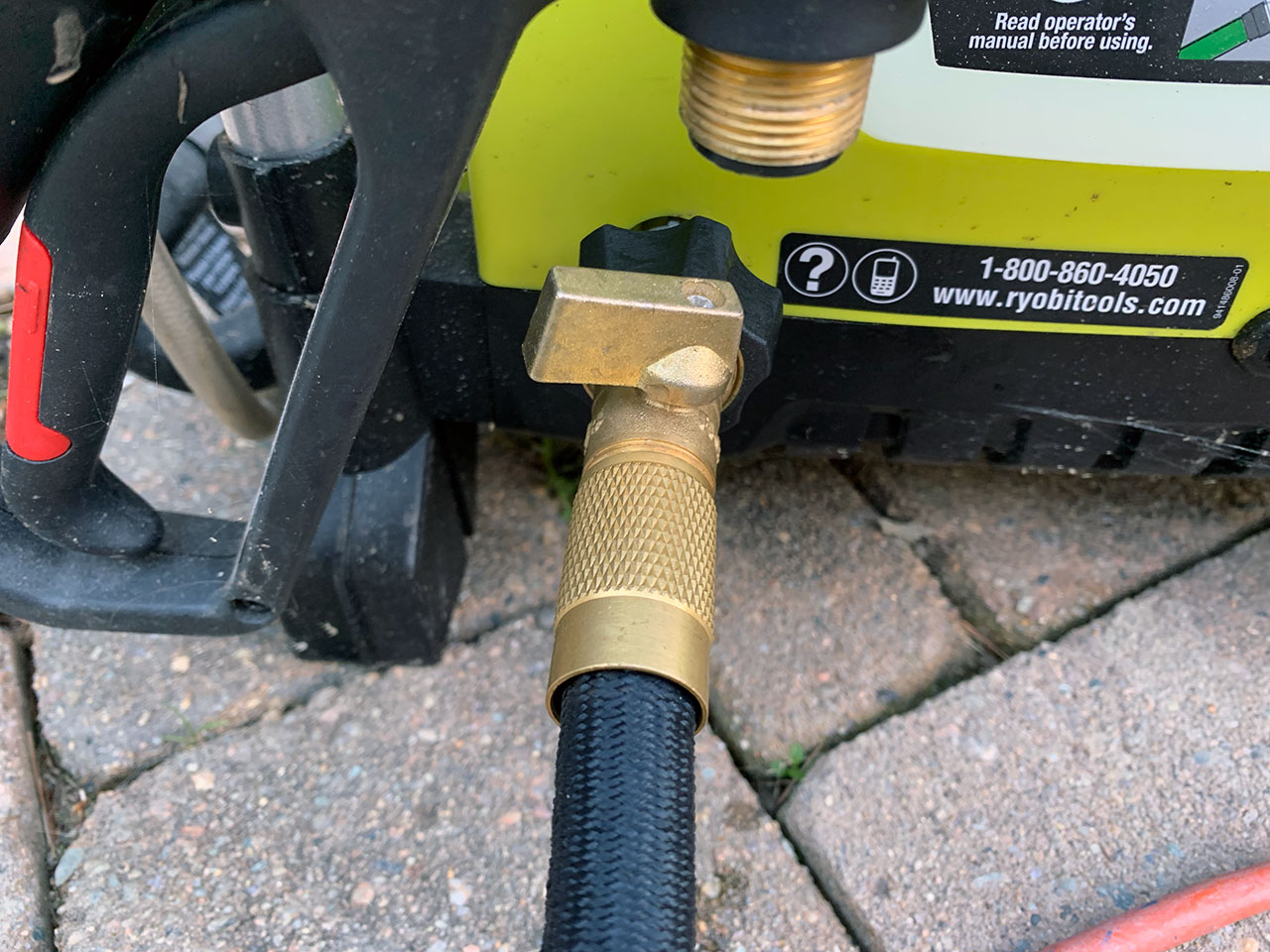
Likewise, there’s an outlet where the water comes out and into the wand.

On this end you’ll attach the hose that came with the pressure washer. It’s going to look a a bit different than your garden hose.
On the other end of that pressure hose is where you attach it to your pressure washing wand.
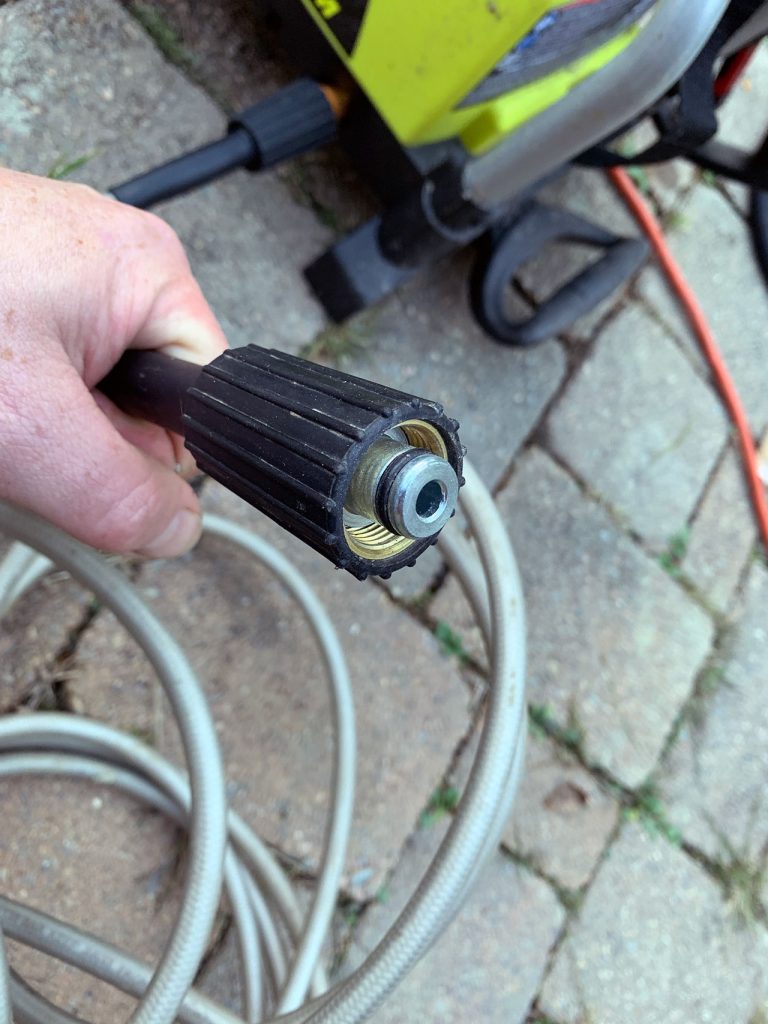
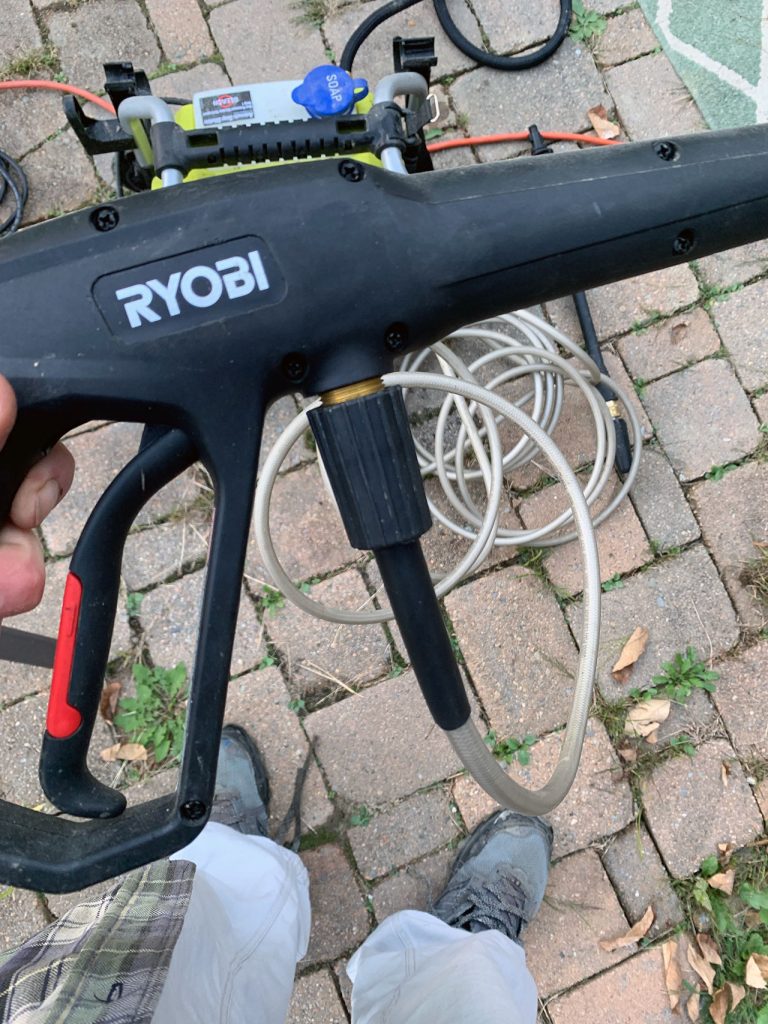
My want comes in two parts for easy storage.
The connection for the two halves looks like that.
On the Roybi 1900 I slide the other wand half into the end seen above and twist it to lock it in place. Make sure it’s locked in place because otherwise you may leak water.
You will need to choose the right washing tip for the task; in this case wood. My pressure washer came with 3 tips: soap, general (wood, siding, etc), and one for masonry (concrete, stone, etc).
My general pressure tip is the black one below but yours may vary and you may need to consult the manual.
Here’s where the tip goes.
All you do is slide back that brass ring a bit, push the tip into the end, and let the brass ring go to lock it in place. Make sure it’s in there well so it doesn’t go flying when you start spraying.
Now the wand is ready.
Lastly, plug in the power, turn on the hose, and you’re good to go!
Soap Dispenser
Some pressure washers, like this Ryobi one, have a reservoir for soap. All you would do if you’re using soap first is to load the reservoir with soap and use the appropriate tip. Mine is this blue one.
You will need to use all the soap in there before changing over to normal pressure washing though so don’t fill it up if you only need a little.
I don’t use soap a lot. For what I’m doing with the deck I won’t be using soap. However, I will use it on things where it matters like when I made barrel raised garden beds for my wife since soil and vegetables were going in there.
Pressure Washing Advice
Now to the meat and potatoes of the matter.
Distance
You want to keep the pressure washer at least 18″ from the wood. If you get too close to the wood you will cause damage. The wood grains will splinter and fray out.
Here’s exactly what will happen. I wasn’t paying attention and got too close washing this area.
It’s not the end of the world and it will happen now and then. As long as you catch it and don’t splinter out entire sections then you’ll probably never notice.
I could sand that out too if I really wanted. I won’t be sanding this though since it’s a deck and it doesn’t bother me that much.
Go with the Wood Grain
I also like to pressure wash with the grain of the wood as this helps minimize damage. If you go against the grain of the wood you could cause some splintering like that picture even if you’re at a safe distance.
You can go against the grain in some instances. It really depends on the wood you’re pressure washing and the condition it’s in.
If the wood is in good shape and smooth, then going against the grain at a safe distance is fine. However, if that wood is older, already pretty grainy or has splits and cracks in it from age, then going against the grain wouldn’t be recommended.
Just Keep Moving
The other piece of advice I have is to start the pressure washer off the wood, bring it over the wood, and then end off the wood. Like so.
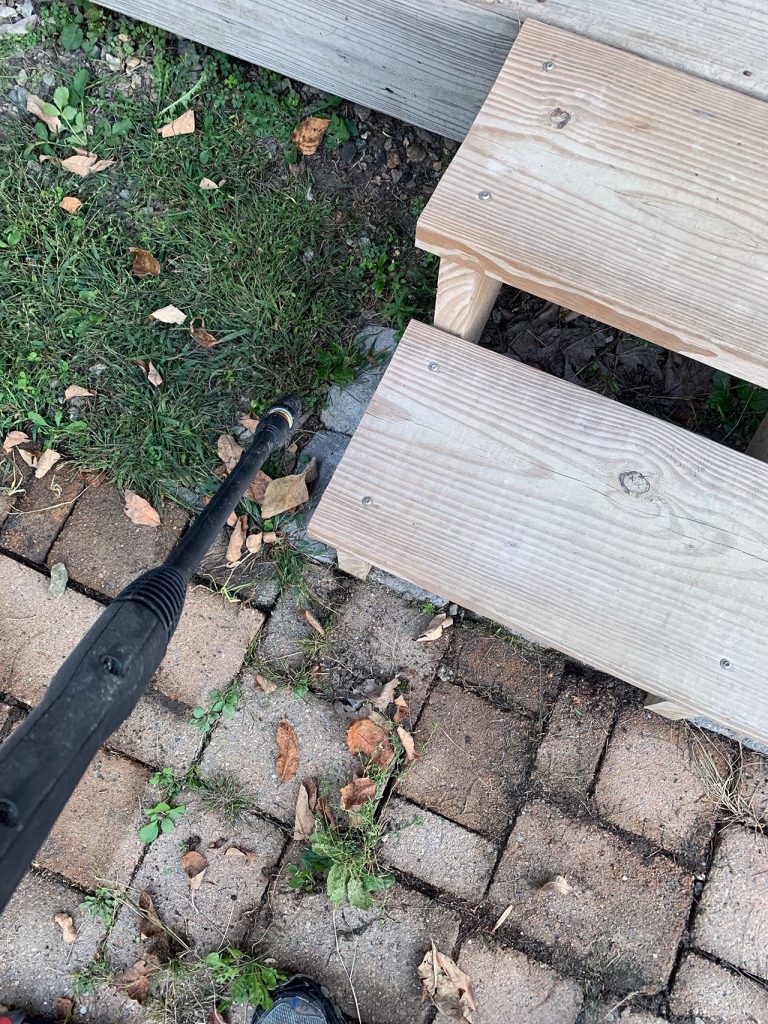


If you start the pressure washer over the wood, then that initial burst of the pressure could cause some damage.
You want to move the wand with a slow steady pace. Don’t keep it in one area; always keep it moving. Staying in one area may cause damage to the wood.
Other than those few things it’s just a matter of taking your time. Pressure washing isn’t hard but it can be time consuming.
Here’s the same stairs after being washed.
They’re still wet which makes them look really new, so I have to wait for them to dry to see exactly how well I did.
Pressure Washer Cleanup
I like to disconnect the water hose and spray to make sure all the water gets out of the pressure washer and hoses. Once that’s done I use a pump saver.
What this does is lubricates the seals in the pressure washer to prevent them from drying out and cracking. If you don’t use a pump saver, then your seals on the inside will wear out and you’ll start getting leaking and other issues.
Pump savers are cheap, last a while, and will keep your washer running for a very long time.
I picked the one up in the picture from a local hardware store because I was pressed for time but you can also find them on Amazon and they’re more affordable.
Anyway, what you do is connect this to the inlet valve (where your hose was connected). The can (not pictured well unfortunately) has a tube and screw attachment to let you screw it into the inlet.
Once attached you press down on the button for a second until you see it come out the outlet (where the wand hose was connected).
Once you see the stuff shoot out you’re all set and ready to put your pressure washer away.
Letting the Wood Dry
If you’re planning to stain after you pressure wash, then you’ll need to give it some time. That time is variable though.
For example, when I pressure washed my wooden trailer in July when it was 98 degrees Fahrenheit it was dry by that afternoon, though I didn’t stain until the next day to be safe.
The deck I pressure washed in this guide is still drying a few days later since temps are now in the 50s and 60s with overnight temps getting down to 28 degrees.
My rule is when the wood looks dry give it another day. You can only see dryness on the exterior of the wood and the inside could still be damp.
So, give it 24 hours after you think it’s dry and then do your staining and you’ll be fine.
Checking the Results
Once everything dried I looked things over and noticed there’s one post I only did half of (must have lost track of what I was doing), and also the deck itself had some boards with areas not fully cleaned.
Following everything above I could gave it a second washing to clean those areas I missed on the post and to make sure the deck boards were completely clean.
However, in my case I’m going to call it good enough. You see, the nights are getting below freezing now and that means my hose is disconnected to avoid breaking the brass. I could set it back up and tackle it but I’m running out of time to get the deck stained before constant freezing.
Before & After Pressure Washing the Deck
Just to show how effective pressure washing is here’s an in-process to show you the difference clearly as you’re washing, and before and after as well as.
Here’s a post that I was washing. You can clearly see the difference between what’s been washed and what hasn’t.
That’s a pretty dramatic difference!
Here’s the before shots of everything.
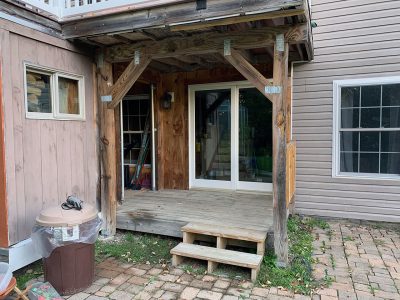

And the after.

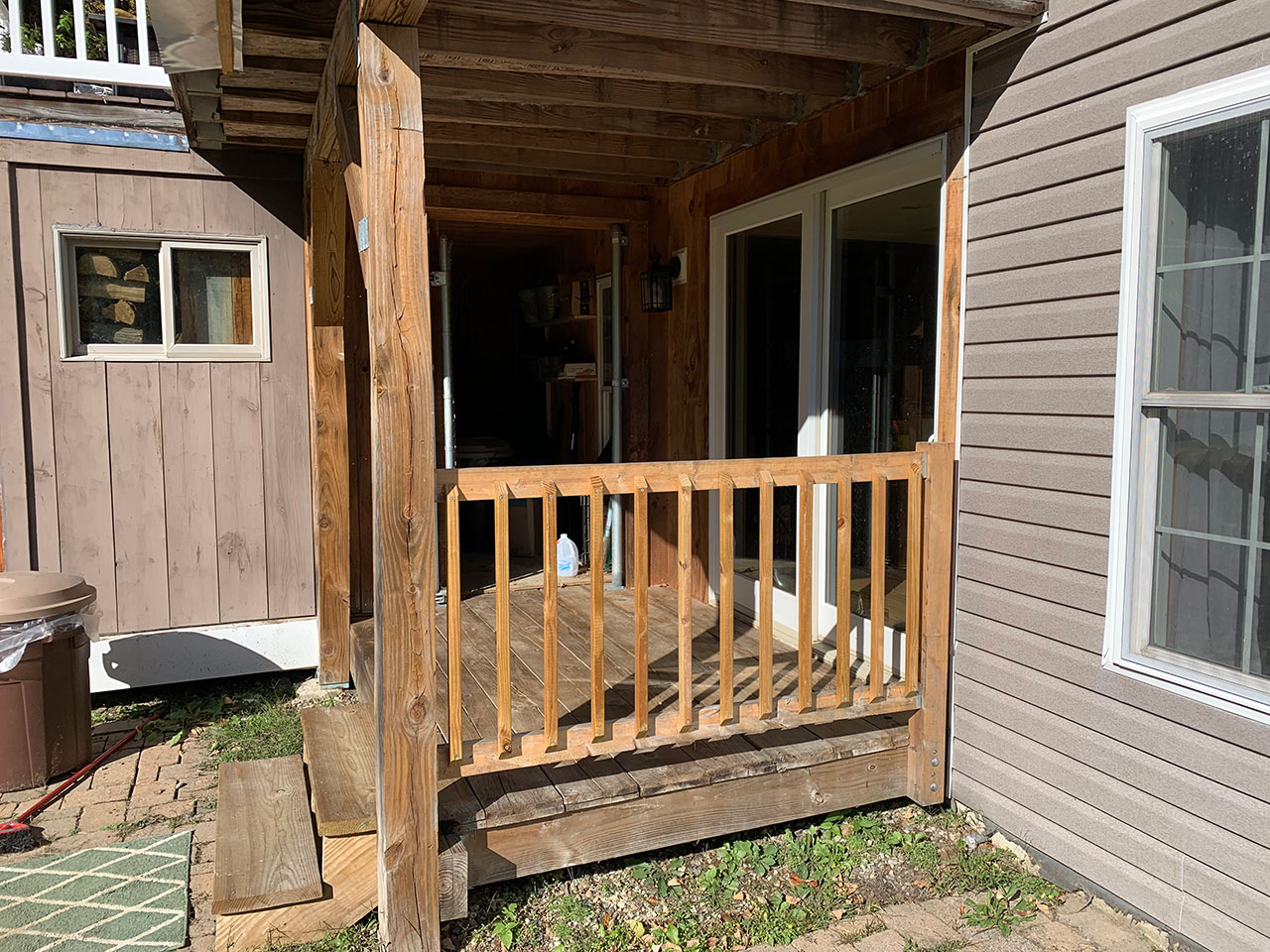
Another substantial difference. You can see the grey weathered look is gone (barring the bottom half of that right post I forgot about). Now all I have to do is stain everything.
Here’s some shots of everything all stained too.
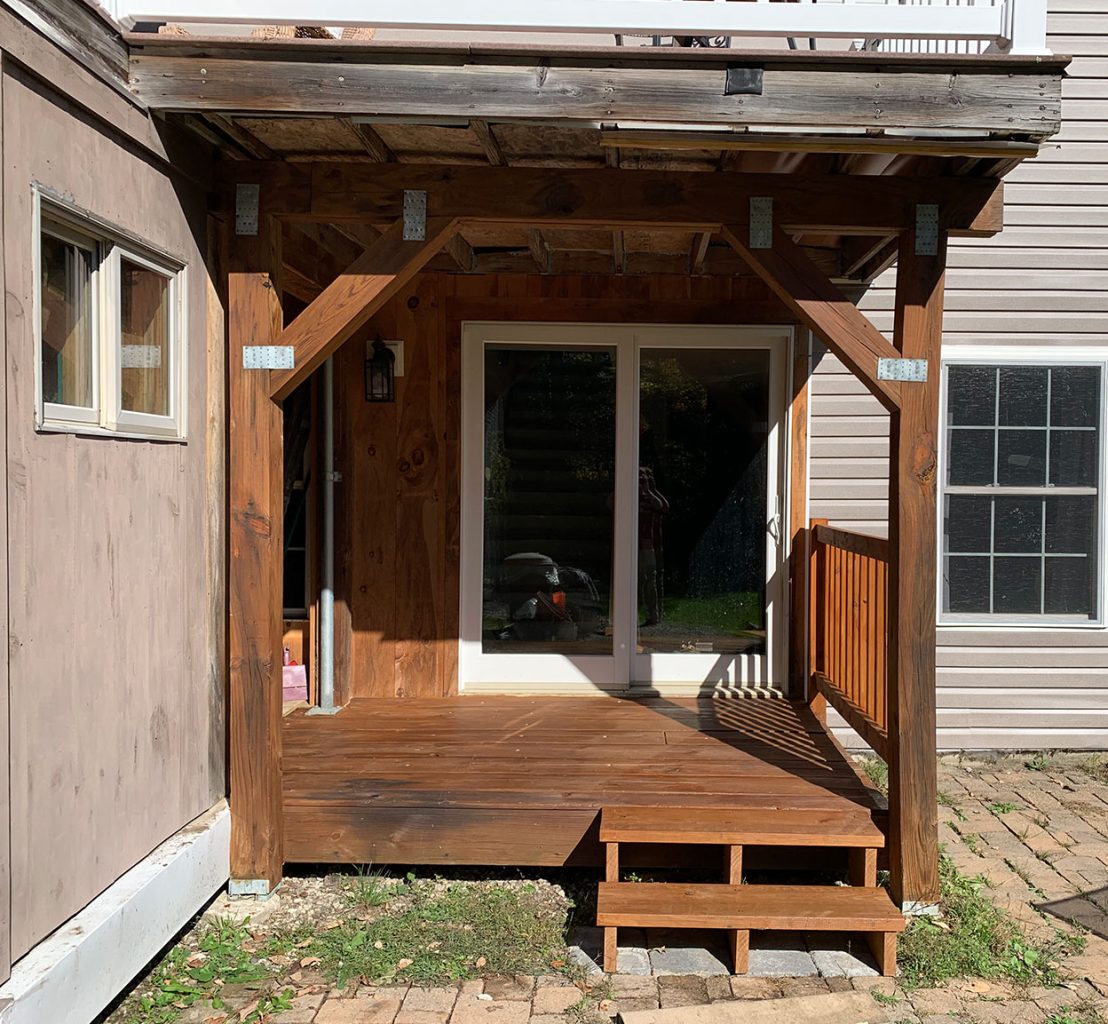

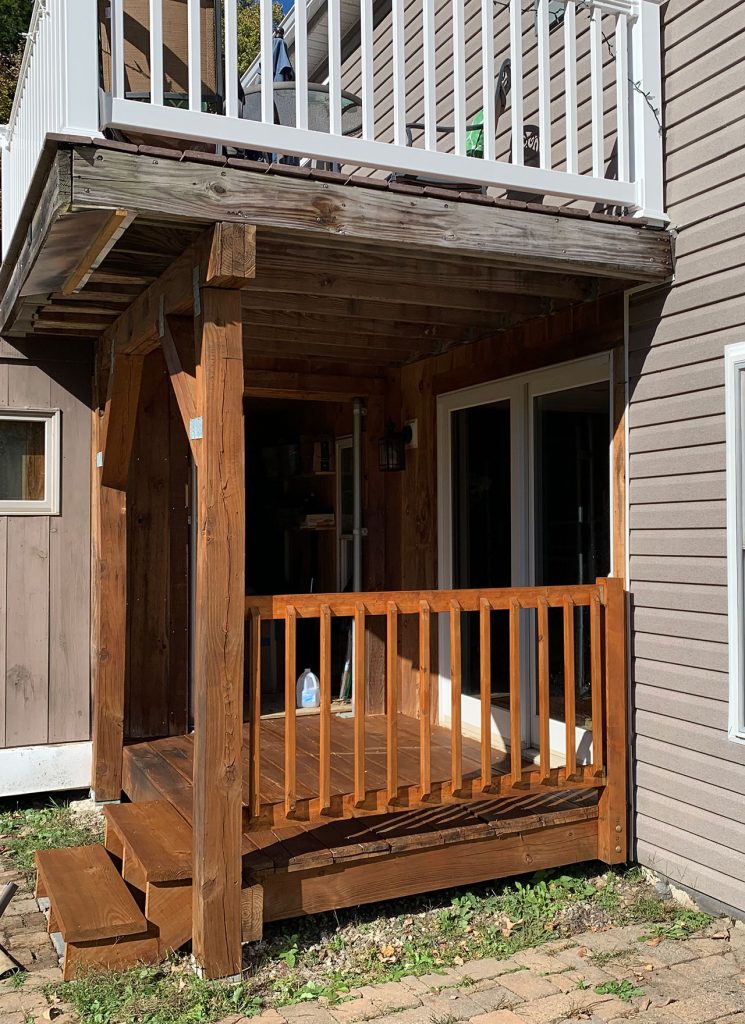
In Closing
Pressure washing is very simple and you’ll get great results following the few tips above. You can wash anything – your house siding, a stone patio, your car, and of course a deck.
As I said above, I’ve had great luck with the Ryobi 1900 PSI pressure washer. It’s an easy to carry around size, has a soap dispenser, comes with 3 tips for the wand, and has enough pressure to handle anything I can foreseeably use it for here at the homestead.
You can find bigger pressure washers and also more commercial grade ones that run on gas but for your average home owner it’s simply not worth the cost.
There are smaller pressure washers too that would get the job done but I find the 1900 PSI to be a great all around size. Better to buy something that’s a bit more than you think you need than find what you bought isn’t quite up to the task.


